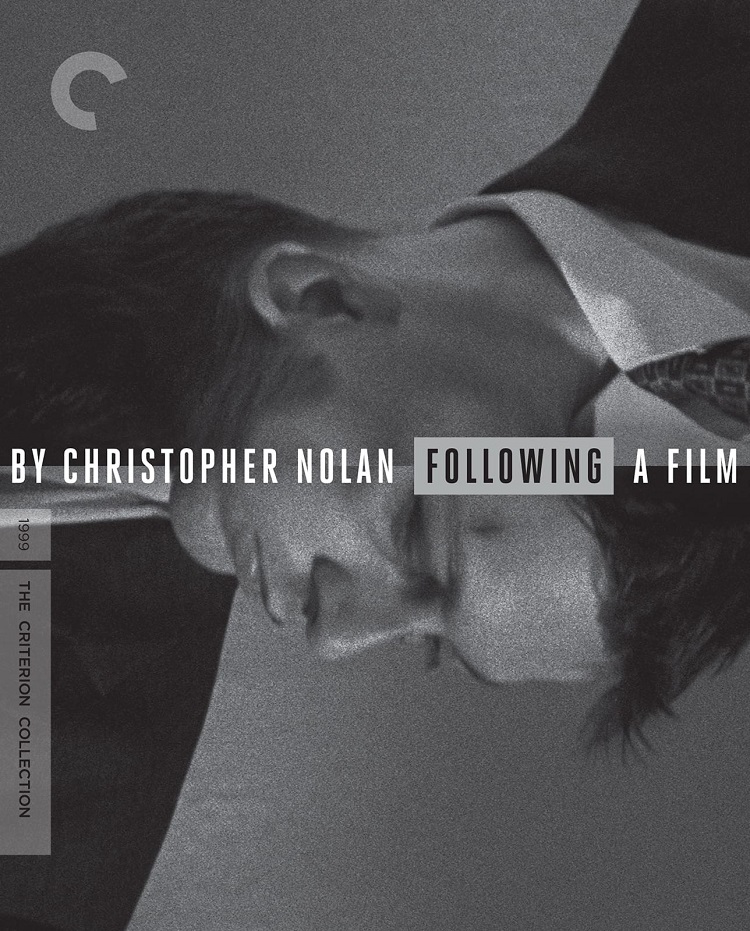
In 1999, a 28-year-old Christopher Nolan couldn’t possibly have seen himself directing such big budget films like Inception and The Dark Knight Rises. The young Nolan was piecing together his first feature film as writer, director, editor, cinematographer and lead financier. The result was the clever Following, which wore his influences on its sleeve. The well-received film disappeared from the film shelves as he released more accomplished films like Memento, Insomnia, and Batman Begins. But in December 2012, the film got a new opportunity to be appreciated when it became part of the Criterion Collection.
It’s initially important to place the film in the context of the film industry of 1999. For a director like Nolan, he had to take solace from the thriving mid-’90s American Indie scene. Directors like Richard Linklater, Kevin Smith, Quentin Tarantino, and Robert Rodriguez were making films on shoestring budgets that found critical acclaim at festivals, small theaters, and on shelves at the height of the video-store revolution. Christopher Nolan funded this movie with his own money – buying 16mm film stock as he could afford it. According to the liner notes, Nolan was able to pay for the film at just under $5,000. Those micro-budget numbers led to Nolan to make a movie with his own singular vision.
Those other micro-budget directors have one thing in common – they had to perform most of the duties on the film. Unlike a large-budget Hollywood film with a huge cast and crew, Nolan and these other Indie directors controlled all aspects of their film and it shows. This calls back the films of Orson Welles and his control over all aspects of his films. That is brought to mind even clearer based on the look and genre of Following. Nolan’s film is B&W mainly because of what he could afford. It also leant itself to the film noir plot of the film. There is a long British tradition of film noir and this film is often compared to the early Kubrick work Killer’s Kiss. Nolan doesn’t follow the typical rules of the genre that Kubrick was working within; he feels comfortable as he would in future films to play with traditional storytelling methods.
Follwing starts as many film noir mysteries start – at the end with our “hero” in police custody. Our main character is credited as just “Young Man”, we’re never sure for sure what his name is honestly. The Young Man tells his story of following strangers around London. He says he “samples” people’s lives by following them to get a taste of their lives. He is noticed while following Cobb, a burglar, who does essentially what the Young Man does but he gets involved to the extent of robbing them to shake them out of their normal lives. The two partner to commit a robbery and the film becomes very Hitchcockian. In the home, the Young Man becomes infatuated with a blonde that is featured in a number of pictures all over the house they are robbing. The rest of the film unfolds at the Young Man becomes more obsessed with the Blonde. It’s equal parts Vertigo and David Lynch straight on to the climax of the film.
Watched in a linear fashion, I’m not sure that the film would hold much appeal. Nolan is already experimenting with nonlinear storytelling. The plot doesn’t follow the reverse rules of Memento or the dreams within dreams of Inception. It does unfold in a way that lets Nolan reveal story as he wants the viewer to know. This influence comes from both Hitchcock and Welles who knew the power of controlling what facts the viewer had access to know. Eventually the different jigsaw pieces start to come together.
Is Following an unseen masterpiece? Not completely. It’s a really interesting look into the mind of a director who continues to have a unique vision for film. There’s a fun aspect to watching the pieces come together. The film is a bit of style over substance. The plot is relatively pedestrian and the idea of watching and sampling other lives seems to be a plot thought up in a college classroom. Nolan is in control of our film experience and he’s already masterful. There is a reward for being an intelligent film viewer that pays attention. You can glimpse a genius just finding his voice and that’s the attraction of the Criterion Collection releases of lesser-known works of famous directors.
The Criterion release does not disappoint with extras. You get a chronological edit of the film that has little interest to me. There’s an interview with Nolan and an informative audio commentary with him. You will also get a very short film he made in 1997 called Doodlebug, trailers, and an informative essay by Scott Foundas in the disc booklet.
It’s amazing to think how quickly this director moved from buying 16mm film to make this film to seven years later making Batman Begins. It’s the lessons that are learned making films like this that the great directors know how to use on a more grand scale. The successful directors from this era are still working today because of the experiences they gained making low-budget films. The final scene in Following is a foreshadow of the ending of Inception with the images of Cobb disappearing into the crowd, leaving the viewer to debate if the story is real or possibly part of Young Man’s fabrications. Criterion Collection rescues another film for the fans in all of us.